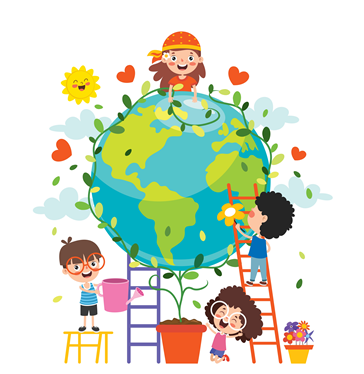There appears to be no stopping the increased densification of Canadian cities. Natural green space is giving way to new residential and commercial development while suburbs are blending into urban centers, become indistinguishable from one another. While this “growth” may be a sign of economic prosperity, it will invariably lead to a national downfall if corrective action isn’t taken. Why? Because for every cubic yard of concrete poured, another plot of land that could be used to support our vulnerable ecosystem falls to the wayside. And that ecosystem is essential to supporting the pollinator insects and birds that our population depends on for food, photosynthesis, and ultimately survival. While we may have painted a dire picture here, there is absolutely an opportunity to turn back the harm done and find a way for our precious critters to thrive amidst the urban sprawl.
A new study from the University of Bristol reports that urban centers and cities can play a key role in pollinator conservation. The research completed in collaboration with Cardiff University and the National Socio-Environmental Synthesis Center (SESYNC) is the first of its scale and has found that if the populous and regulatory bodies alike provide appropriate allotments to invite beneficial insects and birds into their fold cities and pollinators can coexist. Today, our Foundation is stepping in to provide all concerned with some practical ways to grow, protect, and enhance pollinator environments in cities across Canada.
5 Steps to Protecting and Enhancing Pollinators in Urban Landscapes
1. Start a Pollinator Garden in Your Community
A pollinator garden is an oasis for birds, bees, beneficial bugs, and other animals that are responsible for fertilizing plants, those that play an irreplaceable role in the production of seeds, fruits, vegetables, and oxygen (through photosynthesis).
Citizens and municipal figureheads are encouraged to spearhead initiatives in their respective communities to ensure that plots, from ground to building rooftop, are allocated for pollinator gardens that are diverse in size and plant variety. Our Foundation has provided a guide for how to start a pollinator garden in your community with tips to scouting a location, advice regarding which plants to choose, and more. View our 5-step guide to starting a pollinator garden.
2. Introduce Pollinators Into Community Gardens
While dedicated pollinator gardens may be in short supply there are community gardens and urban farms sprouting up in cities all over Canada, presenting current and future volunteers with the opportunity to introduce pollinator plants into the environment. By planting certain species of plants, shrubs, and trees around the fruit and vegetable crops that already exist within the plot, you will enhance the ecosystem. Examples of vegetation conducive to a successful pollinator garden include (but are not exclusive to) the following:
- Asters
- Blue salvias
- Catalpa
- Echinacea Pallida
- Goldenrod
- Honeysuckle
- Lupines
- Pussy willows
- Redbud
- Trilliums
- Violets
- Wild Petunia
Be sure to do some research to find out which pollinator plants are native to your region so that you conform to the natural law of the land that existed there for hundreds of years prior to the incorporation of cities and towns.
Do you need seeds to start your garden? Click here. Purchasing seeds from the Foundation helps support the work that we do.
3. Vote for it in Your Next Strata Meeting (Condo Owners)
Urban centers are stacked with multifamily residential developments, leaving many feeling powerless in the mission to introduce more green space into their city. However, as a condo owner (where applicable) you can participate in strata meetings and initiate the introduction of pollinator gardens on your building’s property, including open air common spaces on the roof and/or area surrounding the development. Plus, residents can be encouraged to grow and maintain small gardens on their patios which will not only serve the primary goal, it will improve the aesthetics of the building as a whole. Remember, even a small flower pot on the lanai can help make a difference.
4. Pollinators in Your Own Backyard (Home Owners)
If you own a single family home or town house you can take immediate action in your front yard or backyard garden by growing pollinator plants and creating an environment that welcomes pollinating bees, birds, butterflies, and other beneficial beasts. In addition to flora, you and your family can set up feeders for hummingbirds and birdhouses and birdbaths for feathered friends.
5. Education on Beneficial Bugs
One thing that makes some people and even urban municipality decision makers think twice about planting pollinators wherever viable is the the misconception about insects. If you’ve ever seen someone do the panic dance when a small bee is in their space, then you know exactly what we mean. This is where education about beneficial bugs comes in. This education should start at the grade school level (please share this Kids’ Guide to Beneficial Bugs) but should also be introduced at farmers markets, in community meetings, and have pertinent information funneled through community center resources and even communicated to local media to spread the word. You can get started by referencing our Foundation’s guides about beneficial bugs and their role in pollination initiatives. Please read and share the following with parties that can help make a difference in your urban community:
- Bee Crisis: It’s Time to be Aware
- How to Keep Beneficial Bugs in Your Garden All Year
- Why Your Garden Needs Bees and Wasps
If you would like to know more about the work of the Foundation, please sign-up to become a Friend of the Foundation.







